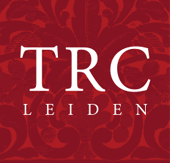During the war, the availability of textiles, clothing and shoes in The Netherlands declined sharply. Textile production fell because cotton and wool - the most important raw materials of the Dutch textile industry - could no longer be imported. Moreover, the purchase and sale of raw materials and textile goods were prohibited. Companies were only granted an exemption from this prohibition if they (also) accepted German orders. Much of the Dutch production was moved to Germany.
To save textiles, strict rules were imposed on clothing and textile manufacturers, which meant that, for example, no "unnecessary" pockets, hoods and pleats were added to clothing. Consumers were also prohibited from throwing away leather, shoe soles and rags; these were reused in industry. From 1943 the production of textiles had dwindled to almost zero. Textile companies switched to offering repair services. One of these that was widely used was the ready-while-you-wait stocking repairman.
Natural fibres and substitutes
Due to an ever decreasing supply of cotton and wool and soon after the German invasion of the country, the industry started to make more and more clothing and textiles from substitute fibres, of which rayon, made from cellulose and wood pulp, was the most important. This form of artificial silk, the use of which had started long before the war, and at first was of good quality, soon could often simply be pulled apart when wet. This was because when the wood pulp ran out, the artificial material started to be made from straw and paper.
Good rainwear was therefore more important than ever, just like the - often homemade - leggings that prevented artificial silk stockings from melting in the rain.
Because of the drawbacks of artificial silk, pre-war quality of textiles was the magic word in advertisements: fabrics that were produced before the war clearly lasted much longer than fabrics made during the occupation. Artificial silk was freely available at the start of the war, but soon it was also being rationed. However, fewer points had to be handed in for artificial silk. As a result, despite the poor quality, more than eighty percent of the dresses and blouses sold during the war were made of artificial silk. Imprimé, printed artificial silk, was especially popular.


